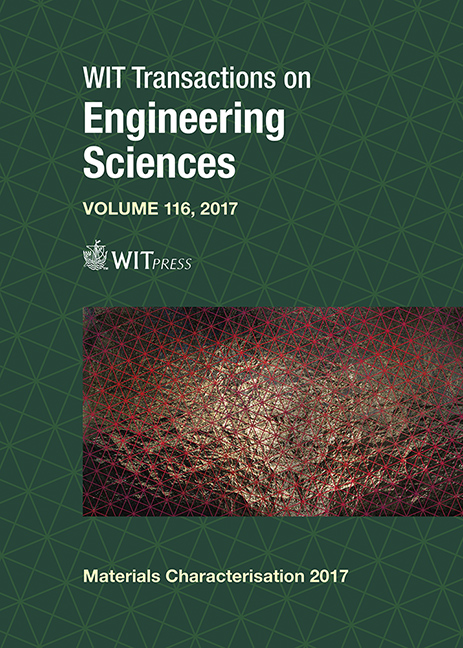THE UNIQUE CASE OF TIN(II) FLUORIDE CONTAINING UNEXPECTED SUBSTITUTIONAL SOLID SOLUTIONS: LOCAL STRUCTURE VERSUS GLOBAL STRUCTURE
Price
Free (open access)
Transaction
Volume
116
Pages
12
Page Range
223 - 234
Published
2017
Size
568 kb
Paper DOI
10.2495/MC170231
Copyright
WIT Press
Author(s)
GEORGES DÉNÈS, ABDUALHAFED MUNTASAR, M. CECILIA MADAMBA, ZHIMENG ZHU
Abstract
Solid solutions provide the means of tailoring the properties of materials by adjusting their chemical composition without phase demixing. A solid solution is a compound with a variable composition. Substitutional solid solutions are formed by replacing some atoms/ions by other atoms/ions. In order to be energetically favored, this replacement is possible only if certain criteria are met: (1) size criterion: there should be no more than 15% difference between the radius of the atoms/ions that are replacing each other, and (2) bonding type criterion: the replacing atom/ion should be able to accept the bonding type of the host. If these criteria are not met, the substitution will create an unacceptable level of stress at and around the substitution sites. In our studies of the SnF2/MF2 systems, where (M = Ca, Sr, Ba or Pb), we have found a M1–xSnxF2 solid solution for M = Ca and Pb, with a wide range of composition in the case of Pb. In addition, the investigation of the SnF2/MF2/MCl2 systems revealed an even more complicated type of solid solution. All should be forbidden according to accepted criteria: the alkaline earth metal fluorides and chlorides have ionic structures, while SnF2 has three allotropes, all which are characterized by strongly covalent bonding with a significant amount of polymerization. In addition, the similar size criterion is grossly violated, Sn2+ being much smaller than the alkaline earth metal, well beyond the accepted limit of about 15% for ion substitution. Furthermore, the wider solid solutions are formed with PbF2 and BaClF, i.e. for the cations that have the largest size difference. The Ba1–xSnxCl1+yF1-y solid solution is by far the most unusual, and it is probably unique since it is a doubly disordered solid solution (simultaneous disorder on the cationic sita and on the anionic sites). The combined use of X-ray diffraction and Mössbauer spectroscopy was necessary in order to understand these solid solutions.
Keywords
solid solutions, divalent tin, lone pair stereoactivity, X-ray diffraction, Mössbauer spectroscopy





